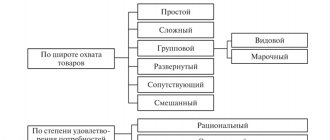Features of grain export
If until 2021, 1/3 of the grain grown was exported, then, starting in 2021, at least half of the grain harvested in Russia began to be exported. The reason for this phenomenon is partly hidden in higher export prices compared to those offered to agricultural producers by the Ministry of Agriculture. Therefore, agricultural producers are in no hurry to sell grain on the domestic market, but strive to get maximum profit by selling grain abroad.
ATTENTION! We work only with legal entities.
The largest capacity for transshipment of grain for export is located in the Krasnodar Territory. It is shipped through Rostov, Taganrog and Yeisk ports.
Russian grain is exported to Egypt, Turkey, Asia, Africa and the Middle East. Moreover, recently the main importer is Türkiye. In terms of purchase volumes, it overtook Egypt, purchasing 7.7 million tons of grain. Iran ranks third, Bangladesh fourth, and Saudi Arabia fifth. Small volumes of grain are exported to the EAEU countries.
From April 1 to June 30, 2021, the Ministry of Agriculture introduced restrictions on grain exports outside the EAEU. A quota of 7 million tons has been established. These measures are aimed at curbing price increases in the domestic market. At the end of April, the quota had already been chosen. The Government of the Russian Federation has the right to introduce a complete ban on the export of grain products outside the country for a period of no more than 6 months.
The largest buyers of Russian feed wheat
We have prepared a list of companies where you can sell feed wheat. These are the largest importers purchasing their products from the CIS countries.
- VA INTERTRADING AKTIENGESELLSCHAFT: WHEAT FOR FOOD PURPOSES, NOT FEEDER GRAIN, CLASS, IN HEALTHY CONDITION, GOOD COMMERCIAL QUALITY, SOFT VARIETIES, NOT FOR SOWING, HARVEST, WEEDS -. % HUMIDITY-., NATURE-G/L, GRAIN IMPURITY-. % PROTEIN-. %
- TAVAN BOGD TRADE CO.LTD: SOFT FOOD WHEAT (GRAIN) HARVEST OF THE YEAR, NOT FORAGE, NOT SEED
- DEVECHI DEIIRMA LLC: WHEAT FOOD CLASS-HARVEST G., HUMIDITY, , WEEDS, GRAIN IMPURITIES, , NON-WASHABLE GLUTEN, TYPE VI, SUBTYPE
- UTARO MANAGEMENT SA: WHEAT MIXTURE SOFT VARIETIES, TYPE 1 CLASS, NOT FORAGE, NOT FOR SOWING, HARVEST OF THE YEAR
- IVOLGA LLP - HOLDING: SOFT WINTER WHEAT FORAGE CLASS TYPE IV CROPS SUBTYPE G, GOST R -. TONS
- LLC ROSKAZM COMPANY: WHEAT SOFT VARIETIES, NOT FOR SOWING, GOST R, RUSSIAN ORIGIN, HARVEST FEED CLASS-KG
- JSC DIVICHI BROILER: FED WHEAT OF RUSSIAN ORIGIN, CLASS, YEAR'S CROP, TYPE IV, SUBTYPE, NATURE - G/GL, MOISTURE -., WEEDS -., GRAIN IMPURGE. % -., (GOST R
- BIYBARYS LLP - COMPANY: WHEAT - CLASS - KG (GOST R, FORAGE, FROM SOFT WHEAT VARIETIES OF THE YEAR'S HARVEST
Customs clearance procedure
The procedure for exporting products is regulated by regulations: Federal Law No. 164 of December 8, 2003 and the EAEU Customs Code (the content and procedure for the customs export procedure are disclosed in Chapter 21 of the EAEU Labor Code). This customs regime involves checking documentation, declaring goods and paying duties. The process also includes:
- oral survey;
- customs inspection and inspection;
- checking markings.
The cargo must be presented at customs, therefore, after the cargo arrives at the customs post, customs officers are notified of this within half an hour. Then an inspection is carried out, a customs declaration is issued, duties and fees are paid.
Note! When exporting grain, depending on certain conditions, customs benefits can be used: abolition of duties, lower rates, provision of tariff quotas, compensation.
Compliance with the norms of the Customs Code is mandatory for every exporter, but since each export case is unique, certain problems may arise due to the declarant’s lack of preparedness. SB Cargo recommends contacting a customs broker, who, for a reasonable fee, will take care of escorting the cargo through customs, preparing documents and solving all related problems.
Documentation for customs clearance
Each batch of grain is accompanied by documents:
- foreign economic contract;
- transaction passport if the transaction amount exceeds $50,000;
- customs declaration;
- invoice (invoice);
- transport documents;
- permits;
- description of the product;
- certificate of origin, etc.
The declaration can be submitted on paper or electronically, and submission of an electronic document is possible only through a specialized program. The declaration contains information about the goods, customs regime and the sender/recipient of the goods. A declaration is issued for each batch of goods. The document, in column 44.6, indicates the number and date of issue of the certificate, as well as the name of the authority that issued it. A copy of the document is certified by the signature of the declarant and remains at the customs office.
The declaration can be issued at the place of residence of the owner of the goods or at other customs posts. Moreover, in the latter case, increased customs duties are charged.
The procedure for customs clearance of grain for export has a number of features. First of all, in order to remove grain from Russia, you need to issue a certificate confirming the quality of the exported goods. The customs authority is provided with an original document issued by the State Grain Inspectorate under the Government of the Russian Federation or its representative offices located in the regions - the Russian State Grain Inspectorate.
The quality and safety of the grain is carefully controlled. Grain used for food and feed purposes must comply with the standards of the Technical Regulations of the Customs Union 015/2011 “On grain safety”. Certification of grain sent for export is carried out according to EU methods and standards. The grain is checked for content:
- impurities;
- pesticides;
- toxic substances;
- GMO;
- biologically active substances.
According to standards, the content of genetically modified wheat should not exceed 0.9% of the total volume. If the wheat is GMO, a State Registration Certificate is issued for it. In addition, the quality of grain is controlled by state supervision, the functions of which are performed by Rosselkhoznadzor. Only grain that is sold in the countries of the Customs Union is subject to state supervision.
It is mandatory to provide a phytosanitary certificate, which confirms the quality of the exported grain, the absence of pests and diseases, and compliance with the quarantine and phytosanitary requirements of the destination country. When passing customs, phytosanitary control is carried out, which includes checking documents, inspecting the vehicle and products. The phytosanitary certificate is valid for 14 days from the date of issue.
Permits for export of feed wheat
If you are a manufacturer, we will help you prepare the necessary documents for exporting feed wheat to the EU, CIS, ASIA, AFRICA or AMERICA.
- constituent papers of the exporting organization;
- foreign economic agreement or you can order the execution of the agreement;
- transaction passport for the contract amount over $50,000;
- invoice for cargo with the exporter's stamp;
- invoice with data on the weight and quantity of goods;
- transport documents;
- certificate or passport for goods;
Classification according to the Commodity Nomenclature of Foreign Economic Activity
Grain crops are classified into subheadings taking into account their type, method and degree of processing. Cereals are group 10 according to the HS. Grain includes crops cut before ripening, including in sheaves and ears, not threshed. If the grain is threshed or otherwise processed, it is excluded from this group. In addition, this group includes grains that are edible as vegetables, excluding sweet corn, which has its own product code - 07.
| Cereals | HS Code |
| Wheat and meslin | 1001… |
| Rye | 1002… |
| Barley | 1003… |
| Oats | 1004… |
| Corn | 1005… |
| Rice | 1006… |
| Grain sorghum | 1007… |
| Buckwheat, millet and canary seeds, other grains | 1008… |
In addition to these cereals, group 1006 includes rice, including threshed, crushed, bleached, polished. If cereals in ears or cobs are processed and intended for decorative purposes, then they belong to a completely different subheading - 0604 99 900 0.
Possible savings
The Commodity Nomenclature of Foreign Economic Activity “Wheat,” if correctly defined, can result in very specific benefits for an entrepreneur. In particular, there is even a very definite possibility of actually saving money, for example, by importing a given batch into the territory of the Russian Federation.
You can try to achieve the same result by correctly determining the Commodity Nomenclature of Foreign Economic Activity 9403 20 800 9 for declaration (CertRF employees will give you examples in detail). In this case, the following scenarios are possible:
- A correctly installed code allows you to save from 1 to 18% on duty.
- Additional savings are possible when obtaining the appropriate permits.
- When receiving the Commodity Nomenclature for Foreign Economic Activity “Wheat”, it is important to correctly determine the import scheme. Options may be different - gray, white, black. When choosing each of them, you should pay additional attention to the timing and delivery parameters, and existing risks.
- With the correct calculation of parallel imports, it becomes possible to additionally save up to 3%.
- There is also the possibility of obtaining a refund of value added tax.
Separately, it is worth considering issues with suppliers and processing of appropriate payments.
The same situation exists when assigning the HS code 3926 90 970 9 - a description of plastic products and other materials, including semi-finished products, scraps and waste.
Duty
When exporting products, an export duty in ruble equivalent and a customs duty are paid. The duty rate depends on the subheading of the Commodity Nomenclature of Foreign Economic Activity.
For wheat exports in 2021, according to Government Decree No. 966 of September 26, 2021, a zero duty was established, which was valid until July 1, 2021. Then, by Government Decree No. 737 of June 27, 2021, the period of validity of the zero export duty rate was extended until July 1, 2019, and currently the zero export duty rate is also in effect, according to Government Resolution No. 830 of June 29, 2019. This Resolution is valid until July 1, 2021 in order to stimulate exports within the framework of customs tariff regulation.
The import customs duty rate is 3% for corn, 5% for wheat, barley, oats, grain sorghum, buckwheat, 10% for rice.
Customs payments and VAT payment
When exporting durum wheat, you will not pay the VAT rate to the budget. The price for the client is 20% VAT.
VAT rate: 0%
Export payments: 0%
Excise tax: 0%
Payment for export durum wheat from Russia 0%
When exporting, you can also apply for a VAT refund. To do this, when selling durum wheat, it is necessary to prepare a set of all necessary documents. We can help sell your products in the countries of the Customs Union and APEC
When importing (importing) into another country, you will need to pay a tax, similar to VAT. Let's say in the EU this is VAT. IMPORT VAT: 20%
Transportation methods
The most popular methods for transporting grain are sea and rail transport due to the possibility of transporting large volumes of goods and low cost. Grain is shipped for export in the ports of Novorossiysk, Tuapse, Caucasus, Baltic States, and the Caspian Sea. Grain is transported in specialized tanks on ships specially equipped for this purpose.
Grain is exported by rail from Central Russia and the Volga region, Siberia and the Urals. Specialized carriages are used. This method is the most cost-effective.
Losses during the transportation of grain to companies are compensated in the form of subsidies. Logistics routes are constantly being improved in order to increase grain export volumes. This direction of export is controlled at the state level.
SB Cargo services
Problems in the customs clearance process are inevitable if the declarant is not legally prepared and does not have foreign trade experience. SB Cargo is a customs broker in Moscow that will help you avoid reputational and financial risks, prepare the necessary documents, speed up the customs clearance process, and select the optimal logistics scheme - all for a reasonable fee. We act in the interests of the client and solve any problems that arise during customs clearance of goods. You are required to provide documents for the shipment of goods and the goods themselves. We will do the rest ourselves. If you have any questions, ask by phone, write by email, or immediately leave a request by filling out the form on our website.





